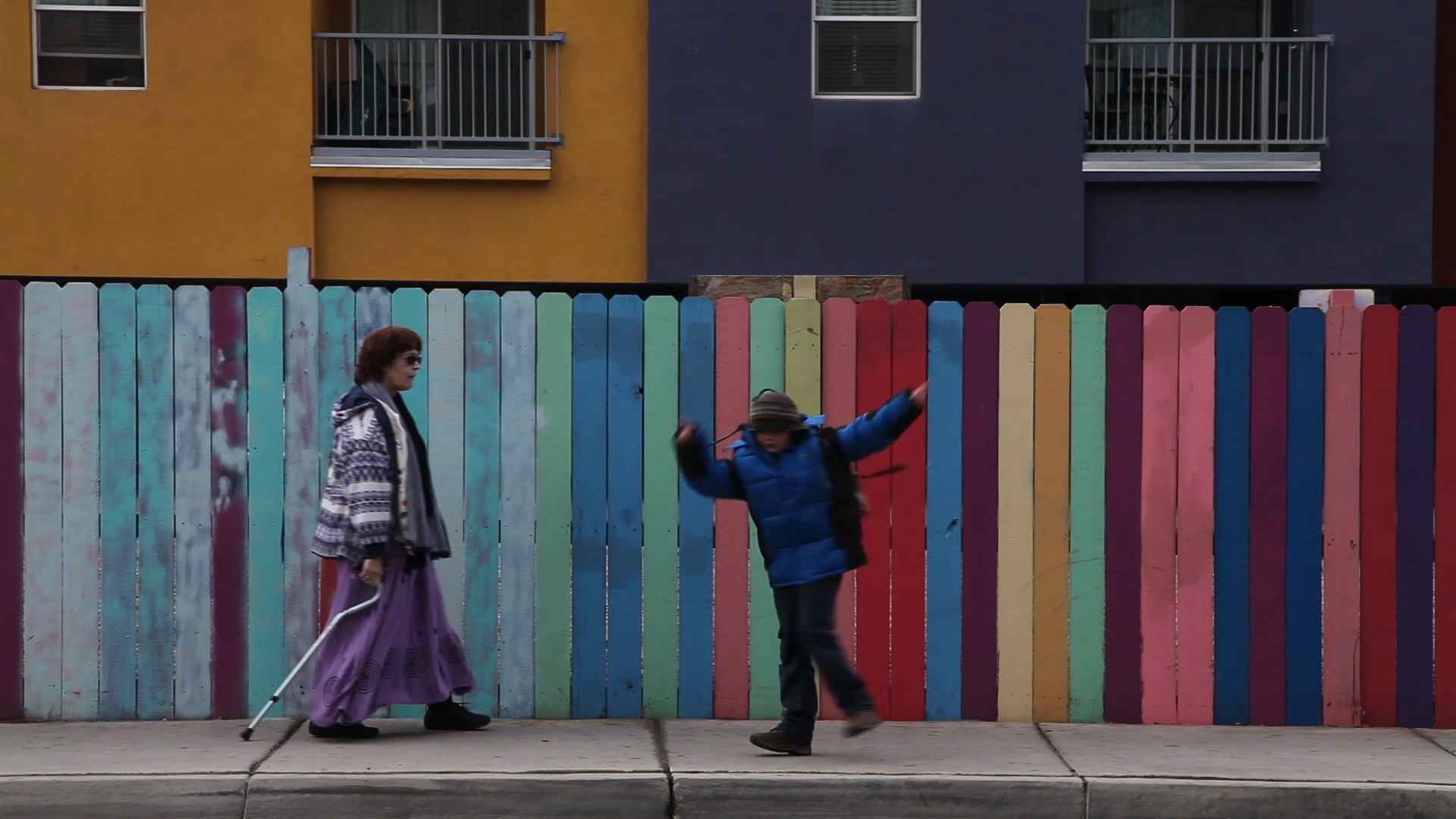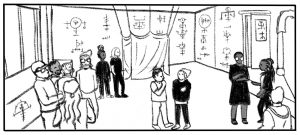For over 15 years the First Nations Film and Video Festival has provided Native American film and video makers of all skill levels a platform to show works that break racial stereotypes and promote awareness of contemporary Native American issues and society. This year, the festival presented over 30 films across the span of ten days at 11 different venues including the Gene Siskel Film Center, the Mitchell Museum of the American Indian, the Beverly Arts Center, and the American Indian Center. The final event was a special screening of three films hand-picked by festival director Ernest M. Whiteman III (Northern Arapaho) at Comfort Station in Logan Square.

The first film, Advent, directed by Jonah T. Begay (Navajo Nation), was a short story about two young children, one human and one alien. The film, mostly silent sans a few well placed Foley sounds and a musical score, begins by following the human boy as he cares for an elderly woman with low vision, bringing her breakfast and guiding her on walks through the city and the woods over a series of a few days. Eventually, the boy finds the woman dead and disposes of her body in a garbage bag in a city dumpster and finds a new home with another elderly woman.

The boy continues his caretaking ways with his new companion and an alien child arrives on the scene. The movie crescendos during an ending scene in which the alien’s powers render the elderly woman bodiless—leaving only her decapitated head and wig on the breakfast table at the end of the film. Overall, this quick film seems to meditate upon human connection. Through vignettes of the young caring for the old, an alien trying to assimilate, and ultimately a murder, the film seems to beg the questions of kinship, motives, and ultimately fulfillment in relationships.

The next piece, Get a Job, was written and directed by Brian Kohne (Native Hawaiian). This feel-good feature length film follows the story of one man as he works to find another man employment. The story chronicles the hilarious situations they find themselves in throughout Maui—everything ranging from a police run-in, a hijacked tourist bus, and a bike crash to a love triangle and the deception of a priest.
The film was produced entirely in Hawaii by Hawaiians and though the film’s production has local roots, the reach and impact of the film extends beyond a Hawaiian audience. The film is absorbing and entertaining for the full hour and a half run time, conjuring memories of friendship, societal pressures to hold a job, and community.

The evening concluded with a screening of No Reservations, written and directed by Trevor Carroll (Ojibwe). This political satire puts a spin on the recent events at Standing Rock as protests erupt in an upper-middle class Caucasian neighborhood in the face of the construction of a pipeline from an Indigenous Corporation. The film provides an alternative point of view of the political threads that remain so tense in light of the pipeline-related events in North Dakota. With a mixture of caricature, dark comedy, and excess, the piece calls into question the exploitative nature of capitalism, white privilege, indigenous land rights, and neocolonialism in one fell swoop.

The three films, while very different from each other, each offer up individual perspectives on relevant issues. This ambitious project offers an important avenue for Native American filmmakers to be able to tell and show their own story, their history, and their perspective on today’s societies and issues through a variety of genres. Doing so is an act of taking power back in light of the brutal processes of colonization and assimilation of native populations in the United States.
Featured image: Film still from “No Reservations,” screened during the final event of the First Nations Film and Video Festival.
 Emily Breidenbach is an arts administrator with experience working at museums, education centers, and non-profits. She is currently the Assistant Director of Marketing and Enrollment for Continuing Studies at the School of the Art Institute of Chicago (SAIC) and has previously managed strategic communications for the Krannert Art Museum, the Frank Lloyd Wright Foundation, and the Museum Education department at the Art Institute of Chicago. She has a B.F.A. in Art History from the University of Illinois at Urbana-Champaign and is currently pursuing a M.A. in Arts Administration and Policy at SAIC.
Emily Breidenbach is an arts administrator with experience working at museums, education centers, and non-profits. She is currently the Assistant Director of Marketing and Enrollment for Continuing Studies at the School of the Art Institute of Chicago (SAIC) and has previously managed strategic communications for the Krannert Art Museum, the Frank Lloyd Wright Foundation, and the Museum Education department at the Art Institute of Chicago. She has a B.F.A. in Art History from the University of Illinois at Urbana-Champaign and is currently pursuing a M.A. in Arts Administration and Policy at SAIC.







